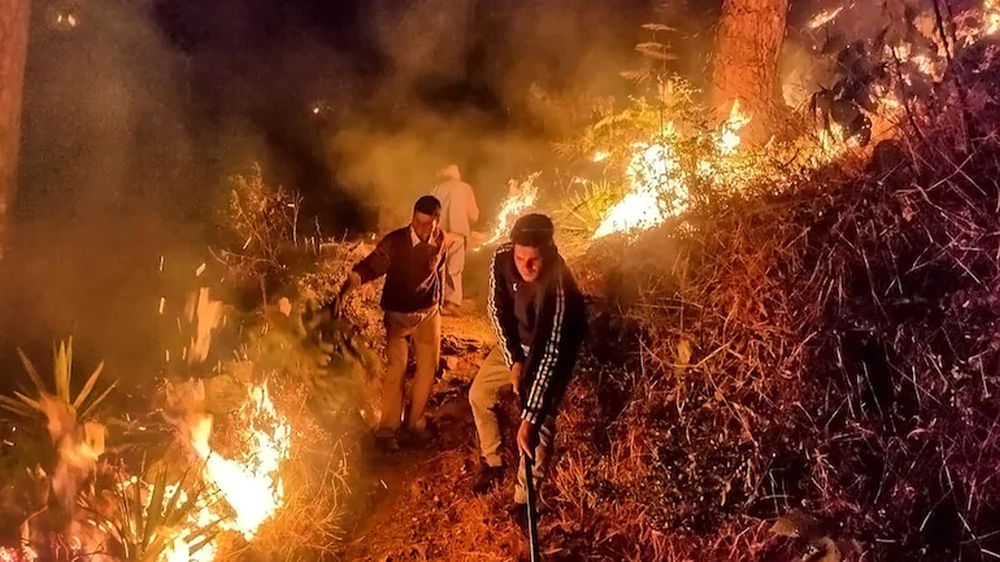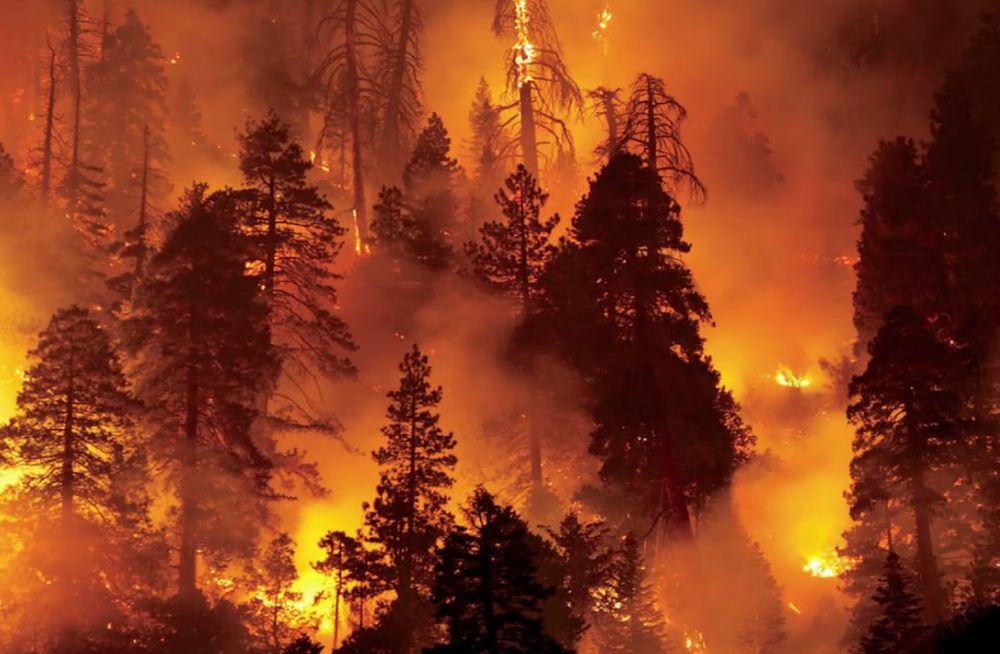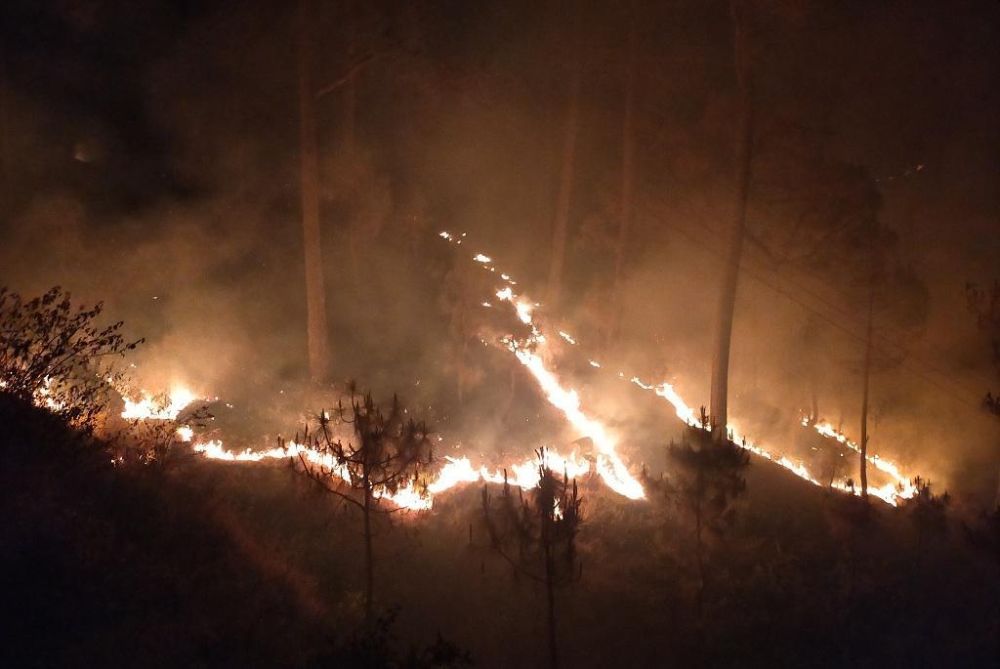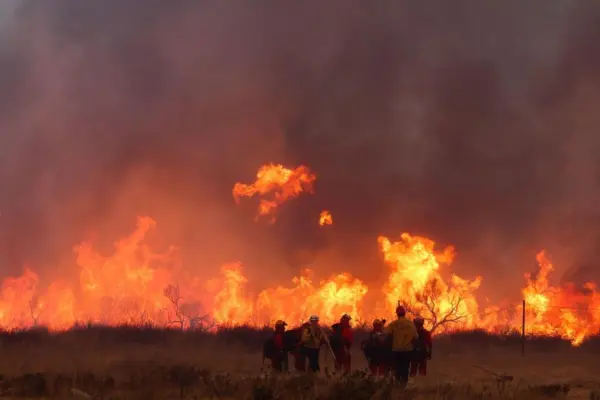Ablaze North: Uttarakhand Battles over 40 Active Forest Fires, Scattered Rains Bring Slight Respite
We all think that forest fires are a common occurrence to avoid the bitter truth that it is mostly our actions that cause such devastation. Each year, news of wildfires in the various regions across the world – The Amazon Rainforest, Australia, the US West Coast, and so on – reach us and we light candles, share Instagram posts, but never take serious action to prevent such incidents from happening.
The state of Uttarakhand in the Indian subcontinent has been witnessing ravaging forest fires for the past six months and surprisingly, nothing concrete has been done to put an end to the calamity. Forest fires in the northern state started in mid-October 2020 and are still ablaze.

Image: PTI
According to the reports, there have been over 1,000 forest fire incidents mainly in the hills. The high carbon emissions from the fires have turned the pristine hill state into a smoke chamber. According to one Pulak Shukla, a resident of Bhimtal – “The air here has become more polluted than Delhi in winters.”
And apparently, he is right in saying so. According to forest department figures, there were 989 fire incidents in the forests in the state from October 1, 2020 to April 4, 2020, spewing out smoke and ravaging everything in the path. Reportedly, the fires have destroyed property worth Rs. 37 lakh and claimed the lives of at least six people and killed several animals in the region.
Cause of Fires
Forest fires are a regular occurrence in the state each year between February and June. Usually, the fires start around February 5 and last till the end of May. This period is recognized as the ‘fire season’ by the state forest department. The dry leaves for autumn catch fire as the temperature start to rise. However, this may be the worst fire since 2006.
Reportedly, the state has been witnessing massive fires alternate years recently. In 2019, Uttarakhand witnessed 2,981 incidents of fires, 4,480 fires in 2018, 1,228 forest fires in 2017, and 4,433 fires in 2016.
The fires have spread in the forests of Garhwal and Kumaon regions, with Nainital, Almora, Tehri, and Pauri district being the worst hit. Strong fires have been reported in the Bageshwar range, Gankhet range, Kapkot range, Bageshwar range, and Dharamghar range. In Rudraprayag, forest fire has been observed from Kedarghati as well. In some areas, the fires have reached a few human settlements adjoining the forests.

Image: Ground Report
Experts believe that this year’s outrageous fire season could be the result of a rapidly changing climate that has significantly shifted the rainfall patterns. The state received only 10.9 millimetres of rainfall from January to March 2021, compared to the usual 54.9 millimetres, which shows a deficit of nearly 80 percent.
The temperature has also been rising across Uttarakhand and all other Himalayan states. The year 2020 was the second consecutive warm year for the state. In the past 36 hours, the forest fires have burned down 105 hectares of forests in the hill states with a total of 75 new incidents emerging.
Uttarakhand Forest Fires 2021
Currently, the state is battling with 45 active forest fires that emerged within 24 hours. The Principal Chief Conservator has informed that 12,000 guards and fire watchers of the state forest department have been deployed to control the fires.
Uttarakhand Chief Minister Tirath Singh Rawat has asked the Centre for help, which is set to send a National Disaster Relief Force (NDRF) team. The state has also set up 1,300 fire stations to combat the forest fires.
उत्तराखंड के जंगलों में आग के सम्बंध में मैंने प्रदेश के मुख्यमंत्री श्री @TIRATHSRAWAT से बात कर जानकारी ली।
आग पर काबू पाने और जानमाल के नुकसान को रोकने के लिए केंद्र सरकार ने तुरंत @NDRFHQ की टीमें और हेलिकॉप्टर उत्तराखंड सरकार को उपलब्ध कराने के निर्देश दे दिए हैं।
— Amit Shah (@AmitShah) April 4, 2021
Forest department officials have been asked to closely monitor the situation. The authorities are clearing out bushes around residential areas to stop the spread of the fires. The Indian Air Force has sent two Mi-17 helicopters to help in fire extinguishing and rescue operations. One helicopter has been deployed in the Kumaon region and the other is in the Garhwal region.
The two helicopters have been spraying water over the affected regions. In some parts of Rudraprayag, the locals are also trying to tackle the fire with available means as it has begun moving towards residential areas.
Continued Disasters
The hill state has been witnessing a rise in natural and man-made disasters for the past couple of years. Since June 2013 floods, there has been a chain reaction in the state’s ecosystems, which has led to one tragedy after another. A mid-day cloudburst caused devastating floods and landslides in Uttarakhand, becoming the country’s worst natural disaster since the 2004 tsunami. The entire nation watched in horror as villages crumbled like houses of cards in front of the raging floods.
And recently, another disaster shook the hill state, when a portion of the Nanda Devi glacier broke off at Joshimath in Uttarakhand’s Chamoli district, triggering an avalanche and a huge flood in the Alaknanda River system. The huge flood washed away hydroelectric stations and trapped many labourers, many were killed while many went missing. The sudden flood in the middle of the day in the Dhauli Ganga, Rishi Ganga, and Alaknanda River – all knottily related tributaries of the Ganga – prompted widespread panic and large-scale devastation in the high mountain areas.

Image: Manmeet Singh
While many believe these to be natural disasters, some experts point out that these incidents were prompted by increased human activities and interference in the fragile ecosystem. Sure, climate change and high temperatures have accelerated the glacier melts, but the phenomenon is exacerbated by the relentless carbon emissions that are generated from various anthropogenic activities.
Clearly, this recent happening cannot be blamed on climate change. From 2000 to April 4, 2021, the state has lost nearly 50,000 hectares of forest land to fires. Uttarakhand has a forest area of over 38,000 square kilometres, which constitutes 71 percent of the total geographical area of the state, yet the state does not have an effective strategy to deal with forest fires that have been a common occurrence for decades.
It is imperative to understand that the Himalayan region is an extremely fragile ecosystem, where any sort of burden by humans can lead to a catastrophic event. And in the current circumstances, where global communities are waving the flag for saving species and forests, such an incident is indeed a shame and a disaster that jeopardizes the very existence of life on the planet.


